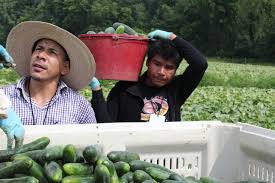Attack on New Piece Rate Law

 A group of farmers from the Fresno area filed a lawsuit yesterday challenging California’s new piece rate law. They make a host of constitutional claims and are seeking immediate injunctive relief from the law. This could be an interesting development for employers currently paying by a piece rate or other production incentive system.
A group of farmers from the Fresno area filed a lawsuit yesterday challenging California’s new piece rate law. They make a host of constitutional claims and are seeking immediate injunctive relief from the law. This could be an interesting development for employers currently paying by a piece rate or other production incentive system.
Two appellate court decisions in 2013 created a huge problem for employers utilizing incentive systems. See Gonzalez v. Downtown LA Motors (2013) 215 Cal.App.4th 36 and Blurford v. Safeway Stores (2013) 216 Cal. App.4th 864. The courts ruled that the employers were not in compliance with California law because their piece rate systems did not compensate employees for time spent on mandated rest breaks or other non-productive time. This led the California Legislature to pass AB 1513 in 2015. The bill which became effective on January first of this year created Labor Code section 226.2 which purportedly sets forth the rules for a permissible piece rate or other production incentive pay system. It also provides a method for employers to seek a safe harbor from past liability related to old piece rate systems which did not compensate employees separately for rest breaks and other non-productive time.
The farmers’ central constitutional argument is based upon the vagueness of the term “other nonproductive time” used in section 226.2. It is defined as time “that is not directly related to the activity being compensated on a piece-rate basis.” The farmers claim that the term and definition are so vague that there is no way to know if a pay system complies with the law. They make the point in their complaint:
For workers that harvest crops, which of the following is “other non-productive time”: traveling between work sites, attending meetings about the harvest, doing warm-up calisthenics for the harvest, putting on protective gear, sharpening tools? What about a worker who works more slowly because of more frequent pauses while harvesting—is each and every one of those pauses “other nonproductive time”? And how long does the pause or break need to last before it becomes “other nonproductive time”? What about bathroom breaks? What about a worker who chooses to make a personal cell phone call while remaining on the employer’s premises? What about waiting for the containers in which harvested crops are placed when they run out? What if an employee chooses to wait for the weather to change before continuing harvesting, or walks between work stations? These are just a few of the real—world ambiguities created by this new law which make it impossible for employers to know whether they are complying, and impossible for Nisei Farmers League to advise its members on how to comply, without unfair risk of civil and criminal penalties.
In addition to the uncertainties created by this vague and ambiguous law, employers now face significant time—monitoring and time-recordkeeping problems for piece-rate compensation. How are employers supposed to identify and accurately record “nonproductive” time to ensure it is properly compensated and to sufficiently document that it was compensated fully and correctly? They must now do so to avoid or defend against claims for non-payment or underpayment of wages. Must they use a clock to separately and individually time each of the activities above to ensure that each act, no matter how little time it may take, is properly accounted for? How are they supposed to do this?
The farmers’ claims are legitimate and they should be applauded for challenging the Legislature. We’ll see . . .
Nisei Farmers League v. California Labor and Workforce Development Agency, et al.
Case Number 16CECG02107
The case was filed in Fresno County Superior Court on June 27, 2016.
